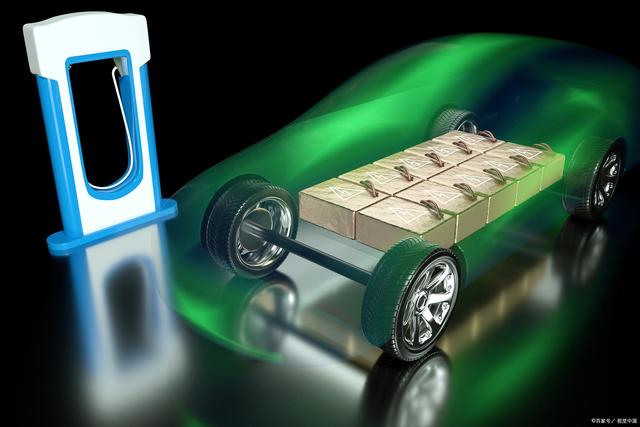Rechargeable lithium-based batteries are already ubiquitous in everyday life. However, further improving their energy density relies on the possibility of using alkali metals (e.g. Li, Na, K) and alkaline earth metals (e.g. Mg, Ca) as anodes in alternative technologies, such as metal-sulfur and metal-air batteries. In the late 1980s, Molicel’s lithium-based batteries and similar technologies had to be withdrawn from the global market because they were prone to fire from internal shorts and thermal runaway under standard operation. More than 30 years later, metal batteries are back in research labs in industry and academia. But there are still major problems to be solved:
(1) The presence of a non-passivating (i.e. porous, chemically reactive) or ion-blocking interphase (i.e. electrolyte-derived solid electrolyte interphase, SEI) on the metal electrode.
(2) Electrodeposition (i.e. the metal ions from the electrolyte are reduced to a zero-valence state at the metal electrode surface when an electric current is applied) is a problem related to metals in different non-planar forms (such as dendritic, mossy deposits, spheres and whiskers) ) growth, leading to short circuits, increased cell resistance, and electronically disconnected portions of the metal electrodes (i.e., the formation of “dead” lithium).
(3) During cycling, the volume and surface area of the metal electrodes change dramatically.
The root cause of metal battery failure is the physicochemical properties of metals, including their high reactivity in the pristine state, and differences in surface and bulk ion diffusion kinetics. Furthermore, both the properties of electrodeposition and the underlying electrode/liquid electrolyte interface are affected by the molecular structure of the electrolyte, which is primarily a function of the ionic radius and corresponding charge density. The current understanding is that, in all cases, SEI control is a key factor in enabling metal batteries.
solid electrolyte interphase
In the presence of residual hydrocarbons, carbon dioxide or water, alkali and alkaline earth metals form a thin native surface film composed of their oxide, hydroxide and carbonate compounds, even when these metals are of high purity , stored under argon atmosphere, and freshly cut before use. According to the Pilling-Bedworth ratio (i.e. the ratio of the volume of the basic unit of the metal oxide to the volume of the basic unit of the metal from which the oxide is formed) and experimental evidence (mostly available for Li), a few nanometers thick, chemical non-uniform, porous native films.
In addition to native surface films, metal electrodes also produce SEI, a hybrid (organic/inorganic) passive film that reacts chemically (eg, corrosion during calendar aging) or electrochemically (eg, current or voltage perturbations) under conditions Formed on electrode surfaces upon contact with salts, solvents, additives and impurities of liquid electrolytes. SEIs on alkali and alkaline earth metals can be hundreds of nanometers thick and are usually represented by a mosaic structure model, where different materials (such as carbonates, oxides, fluorides, fluorophosphates, polyolefins, hemicarbonates, alkoxylates, polymers and others) are seen as heterogeneous multi-microphases with possible pores on the surface towards the electrolyte.
Ideally, the SEI should grow rapidly and provide comprehensive coverage to avoid continuous irreversible electrolyte depletion. After formation, the SEI should behave as a cationic conductor, including negligible electronic conductivity and good mechanical properties, such as high deformation energy. Although SEI has been thoroughly studied in the past, experimental limitations related to the spatial averaging of the collected spectral and microscopic data, as well as the measurement sensitivity, have left various questions open.
Establishment of a practical system
The lack of consensus on the selection of standard electrochemical cell setups to study the electrochemical energy storage behavior of laboratory-scale electrodes remains one of the major issues in the battery research community. Although it has been pointed out that using laboratory-scale cells, under immersed liquid electrolyte conditions and thick metal electrodes (far from practical large-scale battery systems), apparently good cell performance (even in the formation of “dead” cells) can be observed. “electrode active materials), this type of setup is still considered the experimental standard in industrial and academic research laboratories. Recently, anode-free batteries (i.e., the negative electrode is formed in situ from the lithium electrodeposition of the positive electrode on an electronically conductive substrate) have been considered to have energy density advantages compared to conventional metal-ion batteries. In anode-free cells, the loss of alkali or alkali metal inventory during electrodeposition or SEI formation is easier to detect.
Taking all these factors into consideration, it is foreseeable that in the next few decades, research activities focused on rechargeable metal batteries will provide fundamental knowledge on chemical electrode/electrolyte interfaces and interphase control, as well as many developments to be more sustainable and environmentally New idea for friendly battery system.

